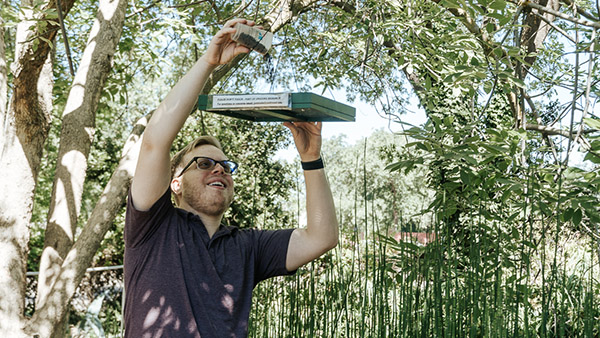When Dr. Tricia Van Laar discovered a sick bird that died in her own backyard, she and fellow professor Dr. Joel Slade got to work uncovering a trend that is endangering wildlife.
The quarantines and remote work culture of the COVID-19 pandemic brought many back to nature. People spent more time in their backyards or in local parks, and this lifestyle shift led to a reported uptick in the purchase of bird feeders.
While feeding birds and connecting to wildlife seems like a good thing, it can actually prove harmful to the animal population, according to Fresno State faculty. So when Fresno State biology professor Dr. Tricia Van Laar discovered a sick bird that died in her own backyard, she and fellow professor Dr. Joel Slade got to work uncovering a trend that is endangering wildlife — and possibly humans.
The well-intentioned back-to-nature movement of the pandemic brought more bird feeders into the local environment. But bird feeders attract large numbers of birds and put them in close contact with one another. The feeders can act as breeding grounds for the spread of germs and disease from sick birds and dirty feeders. Diseases can spread between birds at the feeders, leading to more severe outbreaks of harmful pathogens.
Humans handling dirty bird feeders or sick birds run the risk of infection themselves. This is on top of an already rising issue of urbanization, causing avian habitat fragmentation and disrupting gene flow which may lead to greater illness risks, Slade said.
Visit Fresno State News to read more.
|


